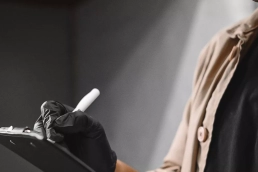Just like a brick-and-mortar store often goes through a renovation, your website should likewise undergo a redesign. The reasons for a redesign are no different from that for a renovation. Business conditions, trends, and your market demographic will change. Your website must reflect the changes in these factors in order to remain current and relevant. A redesign will help you capitalize on new opportunities available in your industry.
While time and money should be primary considerations, they should not be the only ones. There are other factors that should go into the website decision-making process. If you rush into the process of redesigning your website, these factors, if not addressed, can have long-term repercussions on its performance and functionality.
Table of Contents
Toggle10 Important Questions You Should Ask Before Finalizing Your Decision to Redesign Your Website
1. What is the cost of the redesign and how soon can I have my new website go live?
Since we already brought up time and money, let’s address both factors at the same time.
All businesses operate on a budget. Before a new project is undertaken, the company should first determine if they have the money for it. If so, the next step would be to find out how much of its available money can be allocated for the proposed project.
Keep in mind, a budget should have contingencies factored in. Contingencies cover additional work that was not part of the original scope of work. If money is tight, then you should discuss which aspects of the redesign process should be prioritized.
This is why you should consider WordPress for your redesign, that is if you’re not already using WordPress.
WordPress is the number one Content Management System (CMS) in the world for a reason. It is easy to update and manage. WordPress gives out advisories on new versions of its system and plugin upgrades. Its interface is highly-navigable. A web design neophyte can easily find his way around WordPress.
Finally, discuss timelines with the web design agency handling your redesign. Ask the agency to give its best estimate on when your new website can go live. Chances are, the agency will give you a modest estimate in order to moderate expectations. Their timeline will likewise factor in contingencies for delays and further testing.
From here, you should ask yourself if the timeline is doable. Will the timeline affect any commitments, such as a scheduled online event or activity? For an eCommerce website, will the timeline severely impact your ability to generate income and affect your online reputation?
Once you have firmed up your answers to these questions, the decision to push through a website redesign will be easier. You will notice, most of your questions will be directed toward the web design agency contracted to run the website redesign.
2. Why am I redesigning my website? What are my goals?
Giving your website a fresh makeover is a good thing. Your usual site users will enjoy the experience of exploring something new. Think of it like visiting your favorite coffee shop after it has undergone renovation. The coffee smells the same but the feel is new and different.
However, don’t lose sight of the fact that a redesign is first and foremost, an investment. You thought of having a redesign because you wanted to accomplish a goal. So what is the purpose of the redesign? What do you hope to accomplish with it?
A redesign is not just about improving your site’s aesthetics. Functionality is similarly important. Your website may look nice but does it run well?
How is its download speed? Is it mobile-responsive? Can it be accessed by multiple browsers? Do you want to incorporate chat support to improve your customer service?
If you want to enhance your reputation and publish more content, ask the web design agency how many pages it should have. Before anything else, keep in mind the number of pages will affect the cost of the redesign. Hence, the need to allocate funds for “contingencies” in your budget.
3. How qualified is the web designer?
As important as it is to stay within your budget, don’t cut corners by trying to do the redesign yourself. Considering its cost in time, money, and the potential repercussions of the redesign on your goals, it is always a good idea to leave the job in the hands of a capable web designer.
However, don’t just award the redesign project to the first web designer who comes along. You should spend time qualifying web designers. Remember, not all web designers are created equal. Some are better than others.
And even if you do find someone who is “the best” in terms of technical and fundamental competencies, can you work with him/her?
Here are some tips on how to qualify the web designer for your redesign project:
- Interview at least three web designers.
- Ask them to submit their design portfolios.
- Require them to provide at least 3 references/ clients and contact them.
- Find out what services are covered in their redesign proposal.
- You will not get the design correct the first time. Ask the web designer how many website mockups he/she can provide.
Should you hire a freelancer or contract a web design agency? There are pros and cons to both options.
A freelancer would be more affordable but he/she may not have the ability to scale up the work. A web designer would have the assets but you may have to pay a premium for the services. Of course, most agencies are open to negotiating their rates.
As long as you strictly run your qualifying process, you should be fine with either a freelancer or a web design agency.
4. Will I own my website’s assets?
If you pay for services, then you should own the finished product right? Unfortunately, in web design, the rules of buying and selling are grey and not black and white.
Let’s talk about the white elephant in the room.
When you pay for web design services, it does not mean you have full and complete ownership of your website. The same goes for a website redesign. How does this happen?
In order to connect your website to the Internet, you need to lease space on the server of your web host. When you lease, you are given an IP address which is your domain name. In effect, you are paying the web host a fee for you to use your own domain name.
Once you stop paying the leasing fee, you lose the right to use your own domain name.
What you do own is your original content that was posted on the website. This includes text, images, and videos. In addition, you own the programming code and design concept. These are your assets.
It may seem unfair but that’s how it is.
The best thing you should do is to make sure your ownership of the assets is legally covered by a contract. Therefore, before signing up for the services of a web designer, hire a lawyer who can draft a contract.
If the website designer has an existing contract, have the lawyer review it and introduce the necessary amendments.
5. Will My Website Redesign Optimize User Experience?
It’s not enough for your website to be visually appealing. Your website redesign must meet your users’ needs. It must likewise be navigable and easy to use. This is why User Experience or UX is an important consideration whether you are building or redesigning a website.
In order for your web designer to optimize UX, it must have the following components:
- Useful – Addresses a need or concern
- Usable – The user must not have a hard time using your website
- Desirable – Design elements must appeal to the target audience
- Findable – It must be searchable and highly-navigable
- Accessible – Content must not discriminate against persons with disabilities
- Credible – Content must encourage users to believe in what you can do
If UX is poor, the visitor will leave your website. Remember that the attention span of humans is getting shorter. In the year 2000, it was 12 seconds. 15 years later it dropped to 8.25 seconds. Users have very little patience when it comes to websites.
The battle is won and lost with website UX. Think about it this way. Out of all the URLs that appear on the SERP, the user chooses your website. He clicks on your link and arrives on your Home Page. If he doesn’t like what he sees or finds what he needs within a few seconds, he will leave. The beneficiaries of your lack of UX will be your competitors.
Ensuring wonderful UX gives your site visitor the best reason to stay and explore your content. It will mark the start of his/her journey throughout your website.
Find out how your web designer will approach UX. He/she must have a deep understanding of who your audience is; what they want, what they need, and what their strengths and limitations are.
6. How can you ensure that the redesign will improve my website’s performance and functionality?
We briefly touched on functionality in question #2 as one of the goals of your plans to redesign your website. Functionality and performance cannot be overemphasized in a website redesign. As we mentioned in the previous section, site users have a short attention span.
Getting someone to click on your URL is great. However, if your website makes it harder to access your content, he/she will abandon the search.
For your website to be functional, it must have the following qualities:
- Mobile-Responsive – The design and functionality can adapt to the screen size of various mobile devices.
- Fast Download Speed – According to studies, the top-ranking sites in Google have a download speed of 9 seconds. However, users expect websites to download in 3 seconds or less.
- Accessible by multi-browsers – You have to consider other browsers if you want to expand the reach and coverage of your website.
- Fully-functioning buttons and icons – Users may decide to sign up for your newsletter, visit your social media pages, or share your content. These are opportunities you cannot afford to pass up. Make sure the buttons and icons of your website are functioning properly.
One of the best ways to verify the web designer’s ability to improve site functionality and performance is to visit sites he/she has already made. Use your mobile device to access it and test its social sharing functions.
7. Can the web designer provide my site’s assets or do I have to create them myself?
The inability to produce enough content is one reason why website relaunches are delayed. It takes time to create content. For your website to be usable, it should not only have great content, but it should also have enough of it. Content can be in the form of blogs, articles, images, and videos.
The process of creating great content goes through the following stages:
- Drawing up a list of topics and titles.
- Topic research.
- Keyword research.
- Verifying references.
- Preparing an outline.
- Writing the initial draft.
- Reviews and edits.
- Approval of succeeding drafts.
- Spelling and grammar checks.
- Optimization of content.
- Publication.
When discussing timelines, content creation should be a priority discussion point. If you don’t have the time to create content, find out from the web designer if he/she can provide these assets.
Most experienced web designers have content writers, keyword researchers, and graphic designers available on call. If so, ask for samples of their work. You should also consider collaborating with the creative team.
Your input can change the tone of the content and bring it closer to resembling your own voice and personality.
8. Does the web designer accept web management and if so, for how long?
It’s not uncommon for clients to overlook the question of website management during the planning stages. Once the website has been turned over to you, site maintenance and ensuring its security and integrity become very real issues.
Before you finalize any arrangement, ask the website designer if he/she accepts web management and if so, for how long. Specifically, ask the web designer the following questions:
- Once the site has been turned over, will you remain on board to make sure the website is functioning properly?
- How often will you run site audits to make sure all the plugins are updated and working?
- Does the web management service includes Technical SEO and ensuring that the website site health score is excellent?
- Would you be able to fix my website if it gets hacked or is attacked by malware?
- What kinds of security features will you install on my website?
- (For e-commerce websites only) Will you get my website SSL certificates?
- Do you accept monthly retention engagements? And if so, how much would you charge?
Website management is very important. Although WordPress maintenance is easy, it is always a good idea to have a professional web designer oversee the care and security of your website.
9. What kind of analytics tools will be available with my new website?
Analytics tools will give you an idea of how your website is performing in real-time. It will provide you valuable data on on-site visitor behavior so you can improve UX:
- Where are your visitors coming from?
- How long do they stay on my site?
- Which pages are performing better?
- Which types of content result in the highest levels of engagement?
- (For e-commerce websites only) What factors are stopping them from finalizing their transactions at the checkout counter?
Google Analytics is a great online analytics tool. Make sure your web designer has Google Analytics set up on your website. It is highly reliable, provides accurate data, and best of all, it is free!
10. What are my competitors doing?
The Law of Comparative Advantage states that in order to stay ahead of your competitors by having immediate information on what they are doing or what they are planning to do. Find out what their advantages are and come up with ways to counter or overcome them.
Visit your competitor’s websites and take note of the following:
- Did they undergo a redesign?
- What new features have been added to the website?
- What types of content can be found on their website?
- Which types of content are generating high engagement and shares?
- Are the social sharing buttons working properly?
- Can you access it from your mobile device?
- How long does it take to download?
- Did they include customer service features such as chat support?
- Are the images better or have a higher resolution?
The answers to these questions will have an effect on your plans to redesign your website. Go through them thoroughly with your website designer.
Conclusion
Website redesign is not an easy decision to make. It will cost you time and money. Keep in mind that your website will not be accessible during the redesign. Thus, total costs are not solely monetary in nature.
There are opportunity costs as well. You want to be sure you can generate a significant Return on Investment (ROI) to justify the cost.
At Workroom, we take away the guesswork in website redesign and provide the best answers to all of your questions. We have worked with many clients and have a good idea of what they want and need. Call it a combination of experience and intuition!
We can help you get a visually-stunning, yet fully-functional website at the most affordable prices. Best of all, we can get it live and running in weeks, not months, as other web designers may tell you.
If you’re interested in having your current website redesigned or a new one built, please do not hesitate to give us a call or an email. We will get back to you right away.
Last Updated on June 15, 2023
Subscribe And Receive Free Digital Marketing Tips To Grow Your Business
Join over 8,000+ people who receive free tips on digital marketing. Unsubscribe anytime.
Roel Manarang is a seasoned digital marketer and designer with over a decade of experience helping businesses achieve online success. As the Managing Director of Workroom, he combines his passions for design and marketing to deliver exceptional results for his clients. With a proven track record of delivering exceptional results for more than 100 businesses, Roel is a sought-after creative strategist specializing in world-class content, websites, SEO, and social media marketing strategies. Find him on Instagram, LinkedIn, and YouTube.


